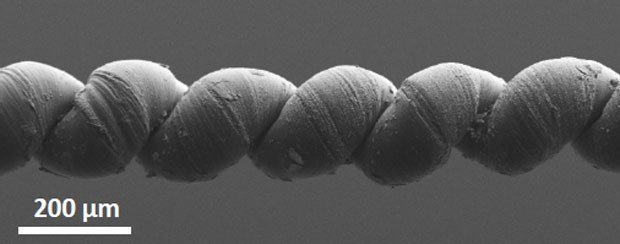Brazilian Team Created Artificial Muscle
An international team, with the effective participation of Brazilian researchers has developed a new type of material that has characteristics similar to those of human muscle – the product received, including the name “artificial muscle”.

The object consists of carbon nano-tubes microscopic substances that form a very resistant fiber. Within the empty spaces left in this fiber, the scientists put some material that has great potential for expansion under temperature changes – in this case, a paraffin.
Thus, the fiber starts to respond to thermal stimuli is expanding or contracting. Roughly, it is the same thing that makes human muscle fiber when it receives neural impulses – which are electrical signals. Therefore, the material is known as “artificial muscle”.
Research published in the journal “Science” on Thursday (15) used thermal stimuli, but, according to the researchers, this can also be done with electrical stimulation, or just with chemical light. This would allow the product to operate in extreme conditions, temperatures around -200 ° C to 2,500 ° C.
Despite the name, the idea is not to use “artificial muscle” to replace the muscles of the human body of truth, at least not for now. “These fibers can be used to replace several pieces of auto mobiles and airplanes, which would be much lighter,” pointed Marcio Lima, Brazilian researcher who led the study at the University of Texas at Dallas, USA.
How to support extreme conditions, these products can be applied in various fields of robotics, including space probes, the author pointed out. For use in the human body, however, would still require a long adjustment work, and its use would be more suitable for external prosthesis with a battery.
The creators emphasized the lightness of the material because it is able to support a weight up to 100 thousand times greater than his own. According to researchers, the material is more potent than combustion engines.
“Even before he left the paper [research paper], we had already registered a patent, because the potential is huge,” said Monica Jung de Andrade, Brazilian Marcio Lima’s colleague in Dallas.The group is responsible for the American Ray Baughman, the same university.
Three other Brazilian researchers also participated in the study: Douglas Galvao and Leonardo Machado, Universidade Estadual de Campinas (SP) (Unicamp), and Alexandre Fonseca, Universidade Estadual Paulista (UNESP) in Bauru (SP).
Shortlink:

Recent Comments